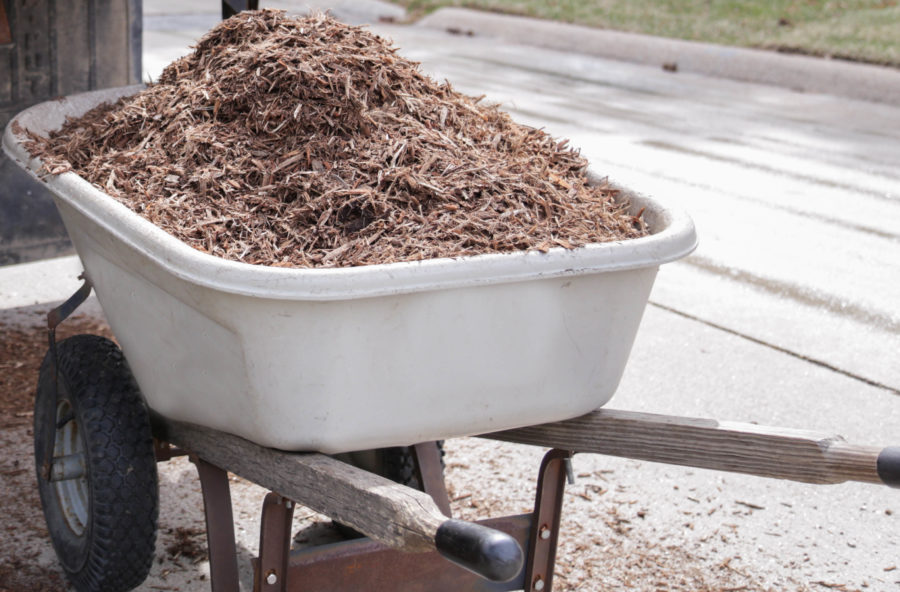
We’ve become more inquisitive over the past few years on how the spring mulching phenomenon has gained so much traction. It has become a ritual of spring with trucks and trailers in motion, pitchforks pitching, people pushing wheelbarrow after wheelbarrow in pursuit of covering the ground around us with mulch.
Oddly enough, it wasn’t until mulch became so readily available that we started asking ourselves about what may be happening around us. Once Convenience Stores started carrying mulch as an impulse purchase we began to wonder…has this activity become a peer group expectation or social norm? Don’t get me wrong, I’m a fan of mulch along with the many benefits it provides. Nevertheless, we don’t remember its application being so focused on only the spring season, nor spoken about among neighbors as an expected obligation. Again, mulch plays a role in the overall cultural care programs within our landscapes, but without some questioning and curiosity, we can’t simply continue to pile it on without some consequence.
It’s not about questioning all the benefits we gain from organic mulch. It is about what we may have lost in using it as an annual, universal, default application- in every situation. There was a time when we let spring unfold and anticipated getting our hands into the thawed, tilth of the soil. To feel the velvety textures, admire the richness in color, smell the aromas, all while gently sifting the crumbling soil through our fingers. In addition, it seems like we let slip away an assortment of other springtime treasures allowing mulch to be our substitute for the newness of the season. In turn, nature announces spring with a symphonic sequencing of snowdrops, crocus, lenten rose, scilla, pasque flower, prairie smoke & spring ephemerals. The fresh green of ferns unfurling, forget-me-nots in flower, all re-introducing us to the arrival of spring and its splendor.
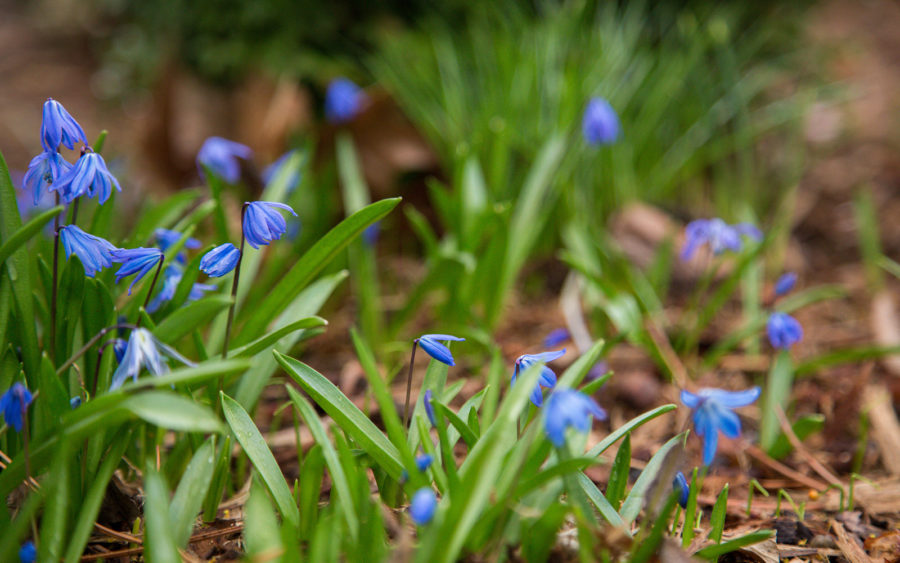

There was also a time when mulch applications took place as summer approached. The idea being that moisture needed to be preserved, soil temperatures, cooled and weeds suppressed. In addition, the plants are in full growth mode and less mulch is needed. A practice at a time of year when we work in cooperation with the summer season to improve growing conditions.
Nature delivers the majority of organic matter (or mulch) to the earth in autumn. When the insulation of such a gift can be put to optimum use. Roots continue to grow below the protective cover, moisture is conserved and the fallen contribution supports the needs of the entire ecosystem. Nature’s abundance becomes next spring’s seedlings as well as food source. All part of a self-sustaining cycle honoring both the value and beauty of our endings as well as the nurturing and newness of our beginnings. Unfortunately, in our crazy quest for neatness we rake it, load it and haul it away. What if our “clean-up” efforts worked in conjunction with the natural plan. Sharing in the process rather than trying to control it.
With all that in mind, how do we refresh our approach to this springtime mulching mania and offer some ideas worth consideration? Following are some thoughts to consider:
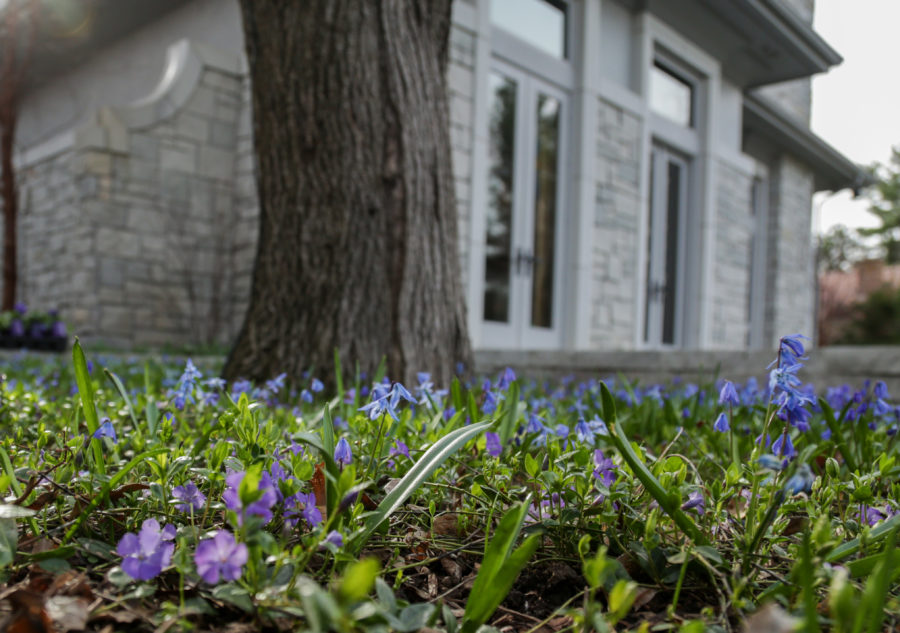
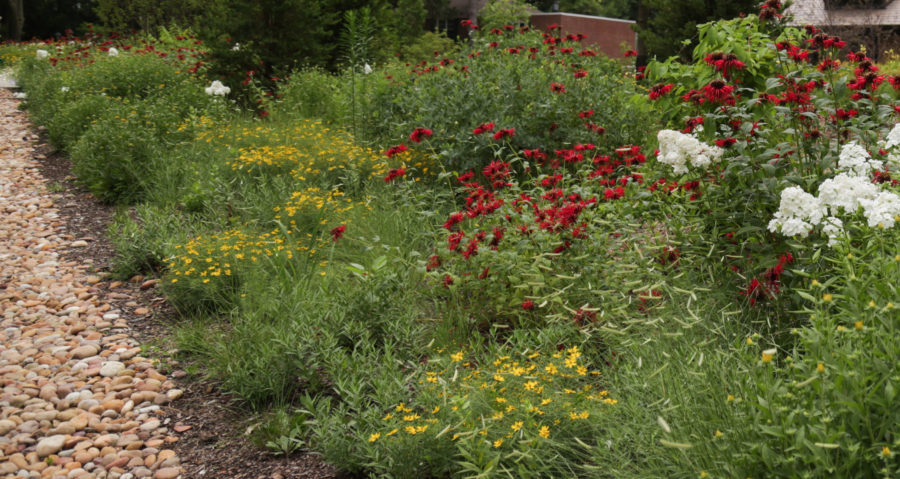
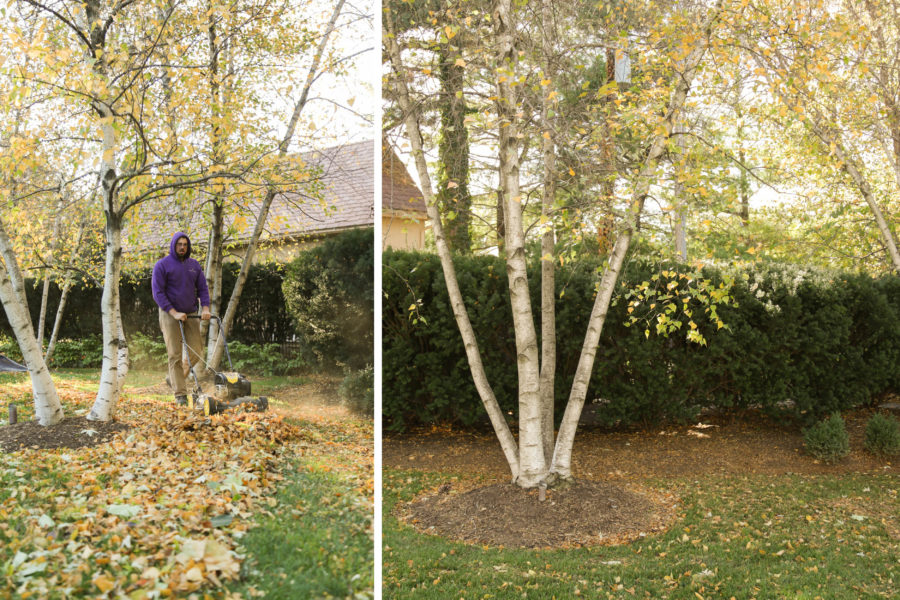
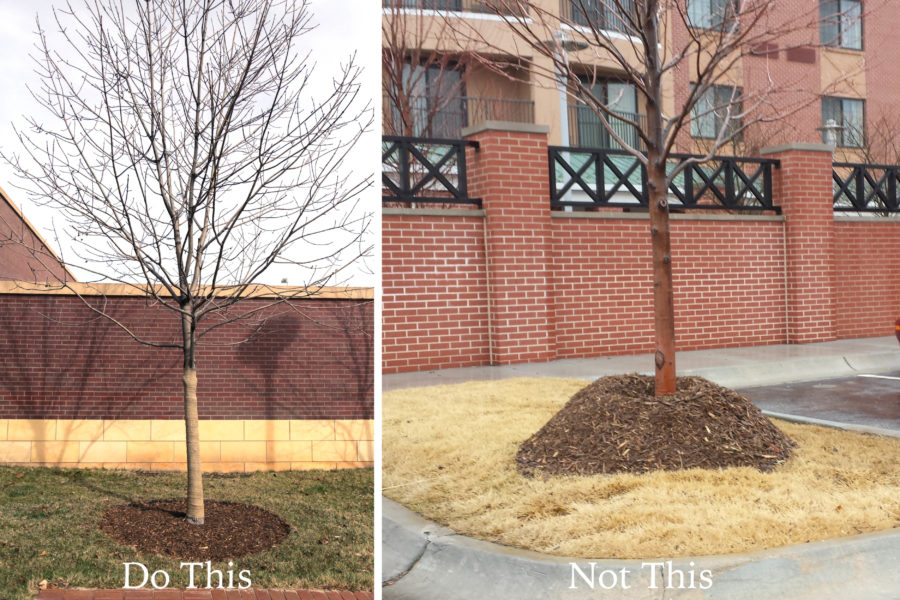
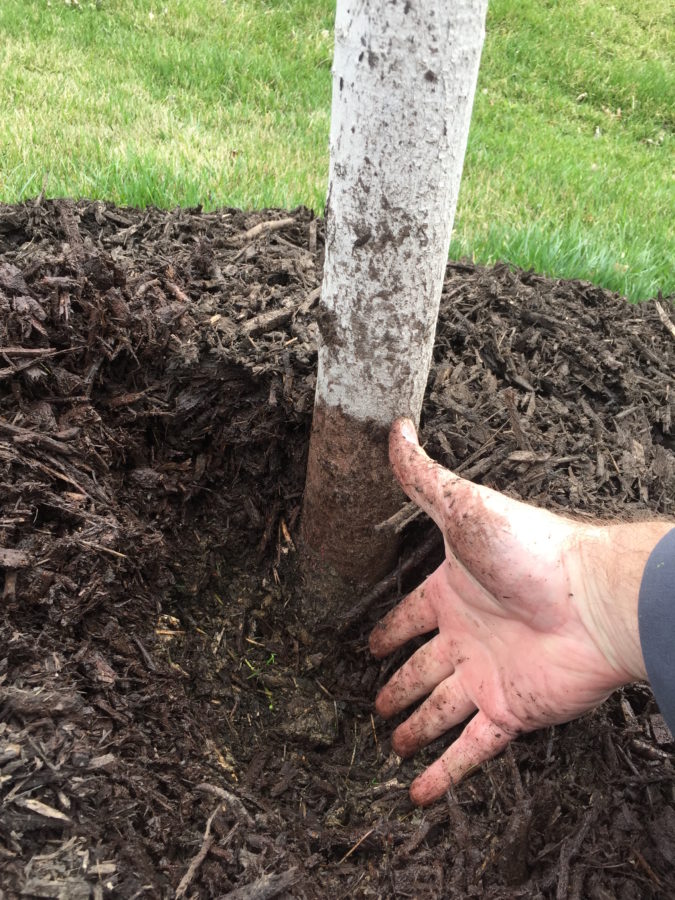
We realize that one of the biggest concerns in garden making is having a sensible approach to the on-going maintenance needs of the garden. In that regard, mulch certainly does reduce an assortment of maintenance inputs, but it doesn’t cover all the needs inherent to our own Human Nature. It also is not a substitute for regular observation and review, aka gardening. Over the years, one constant remains steadfast…every garden, needs a gardener in some form. Even natural systems require some degree of management to keep the ecosystem in balance. Design dialogue needs more upfront conversation about the stakeholder’s maintenance capacity in alliance with their personal aesthetic. When the two are a match the success rate and satisfaction soar. In the end, Gardens are in all our lives to offer Beautiful Moments, contribute to our Well-Being, Bring Nature Near and Reflect our Values and Desires. Mulch certainly contributes in a supportive role, but dare we say we’ve gotten a bit carried away.
Exciting! New plants in the garden! But wait....now what? How much water? When? Quick considerations before watering: Sun & Shade - Although most may say that shade gardens need less...
Spring fills us with wonder. Not in the ‘feeling of surprise mingled with admiration, caused by something beautiful’ kind of way. More along the lines of ‘what can I plant in my empty...